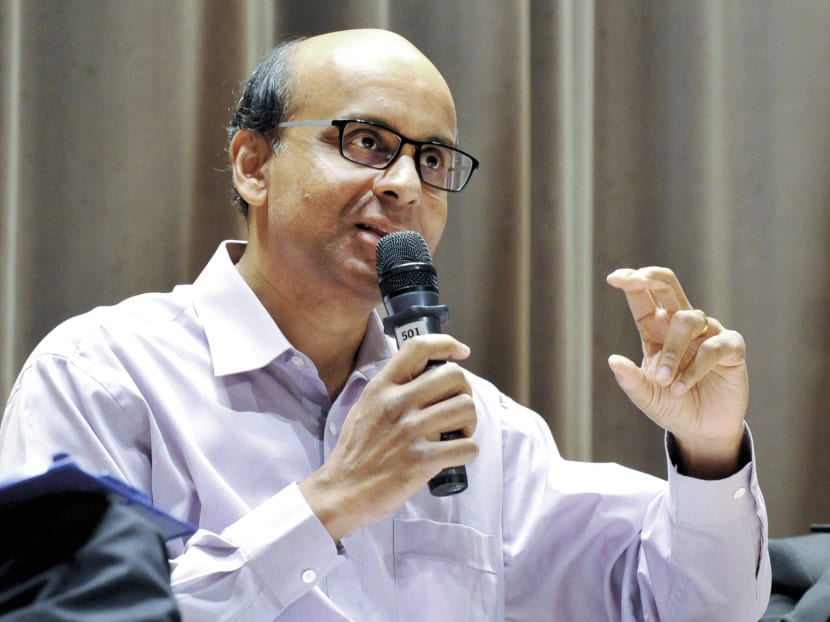Targeted wage model can better help vulnerable: Tharman
SINGAPORE — The wage ladder, which allows workers in low-wage jobs to get higher pay through training and productivity gains, is a targeted approach that helps prevent older and more vulnerable workers from losing their jobs as salaries rise, said Deputy Prime Minister Tharman Shanmugaratnam yesterday.


SINGAPORE — The wage ladder, which allows workers in low-wage jobs to get higher pay through training and productivity gains, is a targeted approach that helps prevent older and more vulnerable workers from losing their jobs as salaries rise, said Deputy Prime Minister Tharman Shanmugaratnam yesterday.
This is why the labour movement’s progressive wage model, introduced in June 2012, is better than introducing a national minimum wage, Mr Tharman told a gathering of 300 service buyers and providers at a symposium, as he reiterated that there was `more than meets the eye in how minimum wages impact the poor’. Take for example in most European countries, high minimum wages have been accompanied by high unemployment, with the most severe impact falling on people with the lowest skills. DPM Tharman added that a number of reputable economists have also pointed out that a higher minimum wage will help some people while hurting others, and the poor will typically not be the ones being helped.
In most European countries, high minimum wages have been accompanied by high unemployment, he noted, with the impact being felt most severely by the least-skilled.
“Politicians are keen to take the credit for raising minimum wages, without accepting responsibility when those with low skills and experience are unable to find an employer at the minimum wage,” said Mr Tharman, adding that youth unemployment now exceeds 20 per cent in much of Europe, including its more successful economies.
Meanwhile, even as the US Congress is debating whether to raise the minimum wage, reputable economists have noted that a higher minimum wage will help some people while hurting others, he added.
The poor will typically not be helped by a higher minimum wage as the majority of them are unemployed and the higher minimum wage will reduce their opportunities of finding an employer.
And over a third of those earning the minimum wage are teenagers, many of whom come from better-off families, Mr Tharman said.
He stressed that Singapore’s move to make the progressive wage model mandatory in the cleaning and security sectors is a targeted approach, not a national minimum wage.
“We are using licensing rules to ensure progressive wages in these industries because of the prevalence of cheap-sourcing in the two industries,” Mr Tharman said.
“Cheap-sourcing practices discourage wages, skills and quality from moving up in the way they do in most other industries. This is compounded by the preponderance of older workers with low education in the two industries — workers whose job choices in the labour market are, unfortunately, limited.”
Mr Tharman also pointed out that the wages will be determined through tripartite negotiations, which reduce the risk that workers will lose their jobs as wages go up.
“We are not setting wages by political decree. What legislation will do is ensure that the progressive wage model that the tripartite partners work out is actually implemented in these industries,” he said.
Noting that Singapore’s unemployment rate is among the lowest worldwide and that workers at the bottom 20 per cent of the income ladder have seen wages grow significantly in real terms in the last five years, Mr Tharman reiterated that direct government support will be at the centre of efforts to help lower-income workers.






